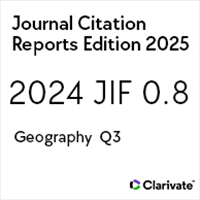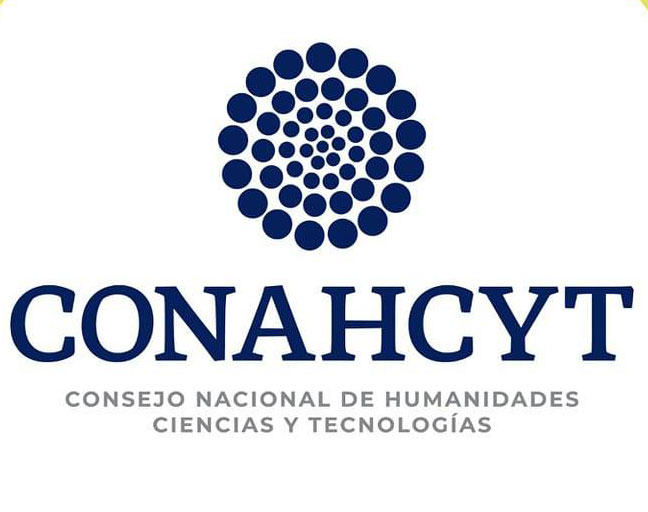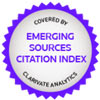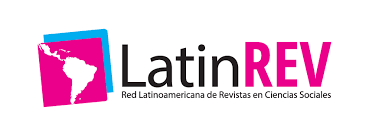The determinants of poverty in the Mexican states of the US–Mexico border
Los determinantes de la pobreza en los estados mexicanos en la frontera con Estados Unidos
https://doi.org/10.21670/ref.2016.33.a06
Keywords:
poverty determinants, poverty profiles, logistic regression, Mexico-US border, multivariate analysisAbstract
This study examines the determinants or correlates of poverty in the Mexican states bordering with the United States. The data used in the paper come from the 2008 National Survey of Income and Expenditures of Households. A logistic regression model was estimated to determine which variables might be important in explaining poverty in this region. It was found that the variables which are positively correlated with the probability of being poor are: living in Coahuila, Tamaulipas or Chihuahua, size of the household, being an ambulatory worker or working in an agricultural occupation, and being a manufacturing, transportation, sales, domestic service or support worker. Variables that are negatively correlated with the probability of being poor are living in Baja California, the education level of the household head and his/her age. Gender of the household head and household location were not statistically significant in the logistic regression analysis.Resumen
Este estudio examina los determinantes o correlaciones de la pobreza en los estados de la frontera norte de México. Con base en la Encuesta de Nacional de Ingresos y Gastos de los Hogares 2008, se estimó un modelo de regresión logística para determinar qué variables podrían ser importantes para explicar la pobreza en esta región. Se encontró que las variables correlacionadas positivamente con la probabilidad de ser pobre son: vivir en Coahuila, Tamaulipas o Chihuahua, el tamaño del hogar, que el jefe del hogar sea trabajador ambulante o que trabaje en el sector agrícola, manufacturero, de transporte, ventas, o como ayudante o trabajador doméstico. Las variables correlacionadas inversamente con la probabilidad de ser pobre son: vivir en Baja California, nivel de educación y edad del jefe del hogar. Los datos de género del jefe de hogar y la ubicación (rural o urbana) de los hogares no fueron estadísticamente significativos.References
Anderson, J. B. (2003). The US–Mexico border: a half century of change. The Social Science Journal, 40(4), 535–554.
Anderson, J. B. and Gerber, J. (2009). Fifty years of change on the US–Mexico border: Growth, development, and quality of life. United States: University of Texas Press.
Anyanwu, J. C. (2005). Rural poverty in Nigeria: Profile, determinants and exit paths. African Development Review, 17(3), 435–460.
Birdsall, N. M. and Griffin, C. C. (1988). Fertility and poverty in developing countries. Journal of Policy Modeling, 10(1), 29–55.
Boltvinik, J. (2001). Conceptos y medidas de pobreza. In J. Boltvinik and E. Hernández Laos (Eds.), Pobreza y distribución del ingreso en México (pp. 30–80). Mexico: Siglo XXI Editores.
Camberos, M. and Bracamontes, J. (1995). Análisis comparativo de la pobreza en la frontera norte de México. Mexico: Centro de Investigación en Alimentación y Desarrollo A. C.
Consejo Nacional de Evaluación de la Política de Desarrollo Social (CONEVAL). (2010). Informe de Pobreza Multidimensional en México, 2008. Mexico, Distrito Federal: Consejo Nacional de Evaluación de la Política de Desarrollo Social.
Cortés, F. (1997). Determinantes de la pobreza de los hogares. México, 1992. Revista Mexicana de Sociología, 59(2), 131–160.
Eastwood, R. and Lipton, M. (1999). The impact of changes in human fertility on poverty. The Journal of Development Studies, 36(1), 1–30.
Fuentes, N. and Martínez, S. (2006). Bienestar económico para la planeación en la frontera norte. In G. Ordoñez Barba and Marcos S. Reyes Santos (Eds.), Los retos de la política social en la frontera norte de México. Tijuana, Mexico: El Colegio de la Frontera Norte, Plaza y Valdés Editores.
Gang, I. N., Sen, K. and Yun, M. S. (2008). Poverty in rural India: Caste and tribe. Review of Income and Wealth, 54(1), 50–70.
Garza–Rodríguez, J. (2000). The determinants of poverty in Mexico: 1996 (Doctoral dissertation). United States: ProQuest, UMI Dissertations Publishing.
Gustafsson, B. and Sai, D. (2009). Temporary and persistent poverty among ethnic minorities and the majority in rural China. Review of Income and Wealth, 55(s1), 588–606.
Instituto Nacional de Estadística y Geografía (INEGI). (2009). Módulo de Condiciones Socioeconómicas de la ENIGH 2008. Mexico: Author.
Lanjouw, P. and Ravallion, M. (1995). Poverty and Household Size. Economic Journal, 105, 1415–1435.
Levy, S. (1994). La Pobreza en México. In F. Vélez (Ed.), La Pobreza en México. Causas y Políticas para Combatirla. Mexico, Distrito Federal: ITAM, El Trimestre Económico.
Lipton, M. and Ravallion, M. (1995). Poverty and Policy. In J. Behrman and T. N. Srinivasan (Eds.), Handbook of Development Economics (Vol. 3, pp. 2551–2657). Amsterdam, Netherlands: North–Holland, Elsevier B.V.
Llovet, J. J. (1989). Relación entre fecundidad e ingresos: revisión de algunas interpretaciones. Estudios Demográficos y Urbanos, 4(1), 139–159.
McKinley, T. and Alarcón, D. (1995). The Prevalence of Rural Poverty in Mexico. World Development, 23(9), 1575–1585.
Merrick T. (2003). Population and poverty in households: a review of reviews. In N. Birdsall , A. C. Kelley and S.W. Sinding (Eds.), Population matters: demographic change, economic growth and poverty in the developing world (pp. 201–212). Oxford, United Kingdom: Oxford University Press.
Peach, J. T. and Adkisson, R.V. (2000). NAFTA and economic activity along the U.S.–Mexico border. Journal of Economic Issues, 34(2), 481–489.
Peach, J. and Molina, D. J. (2002). Income Distribution in Mexico’s Northern Border States. Journal of Borderlands Studies, 17(2), 1–19.
Pick, J. B., Viswanathan, N. and Hettrick, J. (2002). The US–Mexican borderlands region: a binational spatial analysis. The Social Science Journal, 38(4), 567–595.
Ravallion, M. (1993). Poverty Comparisons. Fundamentals of Pure and Applied Economics (Vol. 56). Chur, Switzerland: Harwood Academic Publishers.
Sabir, H. M., Hussain, Z. and Saboor, A. (2006). Determinants of small farmers poverty in the Central Punjab (Pakistan). Journal of Agriculture and Social Sciences, 2(1), 10–12.
Schultz, T. P. (1981). Economics of Population. Reading, Massachusetts: Addison–Wesley.
Sen, A. K. (1985). Commodities and Capabilities. Amsterdam, Netherlands: North Holland.
Sen, A. K. (1987). The Standard of Living. Cambridge, United Kingdom: Cambridge University Press.
Serumaga–Zake, P. and Naudé, W. (2002). The determinants of rural and urban household poverty in the North West province of South Africa. Development Southern Africa, 19(4), 561–572.
Streeten, P., Burki, S. J., ul Haq, M., Hicks, N. and Stewart, F. (1981). First Things First: Meeting Basic Needs in Developing Countries. New York: Oxford University Press.
Székely, M. (1998). The Economics of Poverty, Inequality and Wealth Accumulation in Mexico. London, United Kingdom: Macmillan.
World Bank. (1990). The World Development Report 1990: Poverty. New York: Oxford University Press.
World Bank. (2011). World Development Indicators 2011. Washington, District of Columbia: The World Bank.































